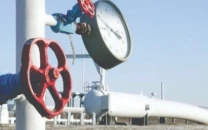Brutalising Syria - lessons and implications
Syria's turmoil deepens as opposition captures Damascus; internal divisions and foreign interests complicate peace.

In almost ten days this November, a coalition of Syrian opposition groups, the 'Syrian Democratic Forces (SDF)' under the 'Military Operations Command', that was led by Hay'at Tahrir al-Sham (HTS) and supported by Turkish-backed groups in the Syrian National Army (SNA), captured Damascus and almost the entire Syria. It ousted, in full public ignominy, the over 50 years' old brutalising rule of the minority Alawite dictatorship under the house of Al-Asad.
This operation, the first after the March 2020 Idlib ceasefire, was codenamed by rebels – under the overall command of Abu Muhammad al-Julani – as 'Deterrence of Aggression'. The US-backed Syrian Free Army (SFA) under the Combined Joint Task Force (CJTF)-OIR already operated in the autonomous regions of Northern and Eastern Syria under the overall direction of US CENTCOM. The Syrian Salvation Government, under HTS and other groups, also controlled and administered Northwestern Syria since 2017, sequel to the Syrian civil war. The local chapter of the transnational Salafi jihadist group Da'esh, the Islamic State of Iraq and Syria/al-Sham (ISIS), also operated in the ISIS-controlled pockets.
The opposition Syrian Interim Government (SIG) under an umbrella group, the National Coalition for Syrian Revolutionary and Opposition Forces, ruled Northern Syria under Turkish control around Azaz in Aleppo Governorate. It was cobbled together after a conference in Istanbul (March 2013). Israel also fished in Syria's troubled waters through intelligence, selective military strikes and agents, to extend its perimeter of security beyond the Golan Heights, rein in Hezbollah, and prepare for any chaos.
On the other side, the arrayed forces included the Russia-backed Ba'athist Syrian Arab Republic, Iran and its proxy Hezbollah and Russia, as the combined Government forces. Russia maintains an operational airbase at Khameimim near Latakia, and a naval base in Tartus on the Mediterranean; reportedly being evacuated now.
Most analysts believe 'whatever happens in Syria will not stay in Syria' because Syria is both a 'bedrock and a microcosm in the Middle East'. Its explosion radiates in all directions; and being a microcosm comprising Sunnis (74%), Alawite Shiites (11%), Christians (7%), Druse (3%) and Kurds (5-10%), it has historically needed a strong Centre to ensure communal peace and security to all sects and segments so that none looks for outside help. Syria's 28 million people have significant Armenian Christians, Jews and ethnic Russians married to Syrians. Around 7 million Syrians are refugees in Türkiye, Lebanon, Germany and elsewhere. Almost 10 million Syrians (36%) are under 24 years. Therefore, competition 'within Syria and over Syria' by outsiders has all the chances to spill across the ME.
It was in this fractured landscape that Bashar-al-Assad, the minority Alawite Shiite, propped by the Russian airpower and military aid; and Hezbollah fighters finally unraveled on 8 December 2024. Taking advantage of Syria's domestic uncertainty would be costly. Israel's incursion on December 8 into the buffer zone and Golan Heights citing the Agreement, which froze the Syria-Israel frontline for decades, should just stay at that. An Israel sucked into Syria means seven million Israeli Jews controlling Israel proper, and its Arab population, and Gaza, and West Bank, and parts of Lebanon and Syria. And that is a fatal strategic overstretch in men, money and material, US support notwithstanding. And military history is not very kind to such overreaches.
The fall of al-Assad regime has lessons and implications. On the lessons side, the historic truism of 'never brutalising a demography' resurfaces with a vengeance. You cannot suppress, oppress and brutalise your own people, endlessly and with impunity. The demographic numbers ultimately prevail though it might take some time. Central Asia, Afghanistan, Iraq and Syria are cases in point. It is particularly relevant to shaky governments on props, everywhere, who are repeatedly lashed by waves of populism. Positive public perceptions of good governance, proper representation and inclusivity were never so politically existential as these are today.
From the 'implications' basket', as cited, Syria will resonate and reverberate. Cobbling an acceptable order for and over such tapestry of peoples and religions would be a tough ask. Although HTS ran an administrative model in its enclave and has appointed an experienced hand, Muhammad al-Bashir as the new interim prime minister, the larger Syria after over half a century of Ba'athist rule may not be ready for the Islamist rule, even if visibly toned down. The sense of secular nationalism generally tends to wear down in such crises if the order, security and services are not restored and maintained at the optimum level, and the population does not feel a visible change for good. In the weakening and consequent absence of such euphoric nationalism, primordial instincts of self and community survival and preservation kick in, and that is when the stage is set for interference from outside.
So internal stability should be on the top of agenda for the revolutionaries in Syria, besides economic revival. The country still remains divided into different factions which single-mindedly ousted the common enemy, Bashar al-Assad. Staying united in success would be a challenge for these disparate groups, as each faction would compete with others, to enhance and maximise their military and political advantage in the ensuing dispensation. So the Syrian event horizon is clouded by uncertainty and caution.
This internal instability would lead into proxy struggles, even potential multilateral conflicts among Syrians, and among stakeholders like the US, Türkiye, Russia, Israel, Saudi Arabia, the GCC and a bruised Iran. Monarchies in the Middle East tend to preserve internal order, whatever it takes, and would be watching in panic the 'sympathetic detonation' of the Islamists' ascension to power in Damascus. Türkiye with its relatively good credentials with HTS may have more leverage than others. It recently offered military training and other support to Syria. Israel would be watching closely and whether or not it withdraws from its 'temporary deployment', as Netanyahu called the IDF's cited incursions, would be a moot point. Less probable.
The US may recall its almost 1,000 military personnel from Syria, but watching the ultimate disposal of Moscow's air and naval bases, from where Russian withdrawal reportedly began, would redefine the US-Russia local and regional balance of power. Such competitions 'over' Syria would naturally affect stability situation 'inside' Syria.
So, the Syrian camel is likely to be standing in near to mid-term, before it decides to sit if it would!














COMMENTS
Comments are moderated and generally will be posted if they are on-topic and not abusive.
For more information, please see our Comments FAQ